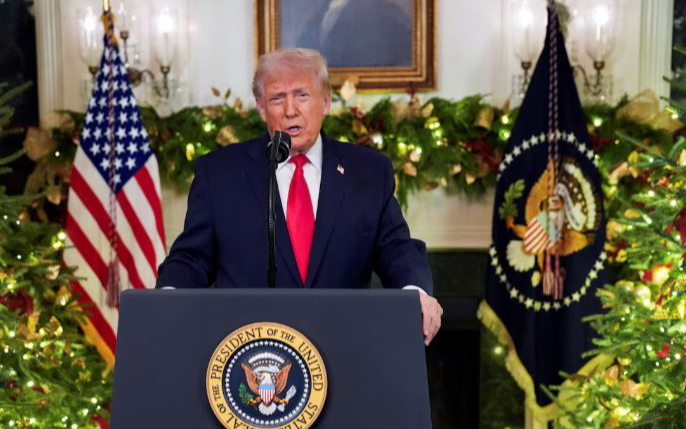參議院通過川普預算案:稅改延續與赤字風險並存

Senate Passes Trump's Budget Plan: Tax Cuts Extended, Fiscal Storm Ahead
[Staff Report] — On July 1, 2025, the U.S. Senate narrowly passed President Donald Trump’s sweeping budget plan, known as the “Big Beautiful Bill”, by a razor-thin margin of 51–50. The bill, which includes extensive tax cut extensions and a major restructuring of federal spending, marks Trump’s first major legislative victory since returning to the White House.
The legislation not only aims to solidify key elements of the 2017 Tax Cuts and Jobs Act, but also proposes deep reforms in entitlement programs, border security funding, and federal agency budgets—reflecting Trump’s vision of “cutting taxes, curbing bureaucracy, and securing America.”
⸻
A Divided Senate, One Final Deciding Vote
After an all-night “vote-a-rama” session, the Senate vote was deadlocked at 50–50. Vice President JD Vance cast the tie-breaking vote, pushing the legislation over the finish line. The bill faced unwavering unanimous opposition from Democrats and resistance from several moderate Republicans concerned about cuts to social safety nets and ballooning deficits.
Senators Susan Collins (R-ME), Rand Paul (R-KY), and Thom Tillis (R-NC) voted against the bill, citing fiscal concerns. However, Sen. Lisa Murkowski (R-AK), after securing additional aid provisions for her state, ultimately voted in favor, tipping the scale in the GOP’s favor.
⸻
Key Provisions: Tax Cuts and Spending Shifts
The bill’s major components include:
• Permanent extension of Trump-era tax cuts, especially for businesses and high-income earners.
• Tighter eligibility and reduced funding for Medicaid and SNAP (food assistance) programs.
• Increased military and border security funding, allocating billions for defense and immigration enforcement.
• Sharp cuts to clean energy and AI regulatory programs, signaling a shift away from climate and tech governance priorities.
According to the Congressional Budget Office, the bill is projected to add more than $3.3 trillion to the federal deficit over the next decade, raising alarms among budget hawks and wary economists.
⸻
Trump’s Vision: Political and Economic Win
President Trump hailed the Senate’s passage as a “historic victory” for American workers, families, and businesses. In a statement from the White House, he emphasized that the bill, “puts America first again—cutting taxes, defending borders, and draining the swamp.”
The administration is now urging the House of Representatives to approve the bill by July 4th, allowing Trump to sign it into law on Independence Day—a symbolic triumph for his second-term agenda.
Democrats, meanwhile, have denounced the legislation as “cruel, reckless, and regressive,” warning it will worsen inequality, hurt the environment, and dismantle essential safety net programs.
⸻
What’s Next: House Vote and Political Uncertainty
The bill now heads back to the House, where it faces internal GOP divisions and unified Democratic opposition. While Republicans hold the majority, disagreements over the depth of social cuts and deficit implications could complicate the final passage.
If the House approves the Senate version, President Trump will secure a major legislative milestone early in his new term. If not, the legislation may return to the negotiating table, risking delays or significant revisions.
⸻
Conclusion: Trump’s Budget Victory or a Major Fiscal Gamble?
The passage of the “Big Beautiful Bill” signals a bold, polarizing shift in federal fiscal policy. For Trump, it offers a chance to cement his legacy as a tax-cutting reformer. For critics, it opens the door to a new era of fiscal instability and social disinvestment. One thing is certain: the battle over America’s budget priorities is far from over.






























